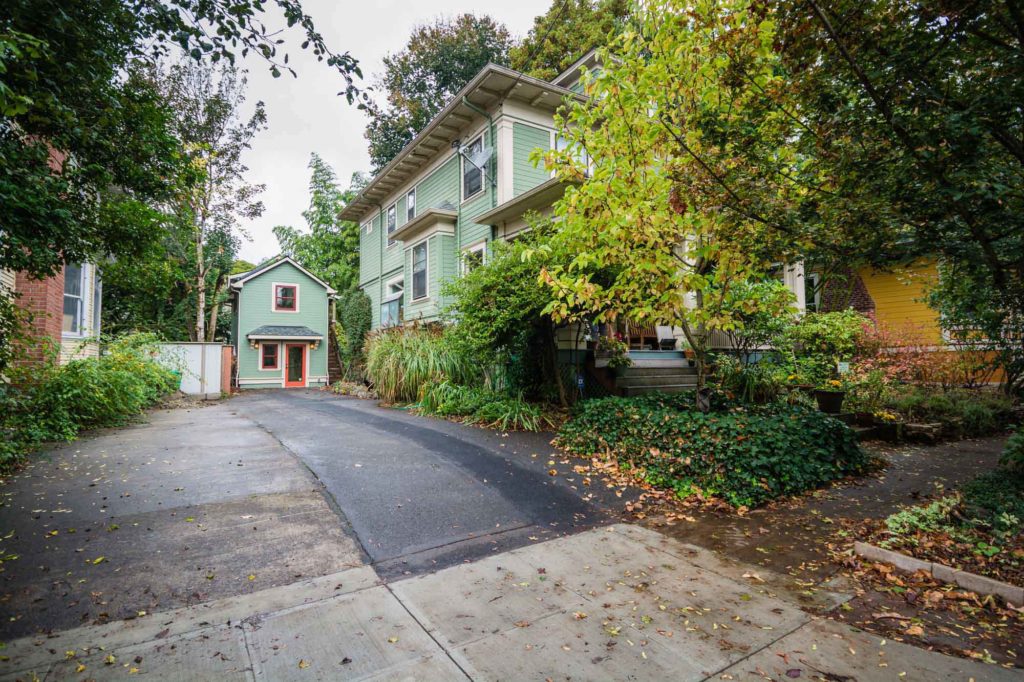Why local affordable housing orgs want to expand accessory apartments in Montgomery County
By John Paukstis, Jane Lyons, Greater Greater Washington
Like much of the United States, Montgomery County is facing a critical housing shortage. Finding healthy, affordable housing near jobs and transit is extremely difficult for many people at varying income levels.
Earlier this year, Councilmember Hans Riemer introduced Zoning Text Amendment 19-01, which is aimed at making it easier for county homeowners to build accessory apartments (also known as Accessory Dwelling Units or ADUs) on their properties. Accessory apartments are separate apartments either within, attached to, or detached from a main unit—think English basements, garage apartments, and small backyard cottages.
Accessory apartments allow homeowners to flexibly use their largest asset, their home, as their family’s needs change. Accessory apartments also provide important economic, social, and environmental benefits including:
- Providing critical rental revenue to a senior living on fixed income and looking to age in place
- Utilizing existing infrastructure to provide additional housing without increasing sprawl
- Increasing housing opportunities around transit, near jobs, and in desirable communities
- Providing opportunities for multigenerational living while maintaining independence for all parties
- Habitat for Humanity could build accessory apartments for low- to moderate-income residents or for adults with disabilities
Importantly, accessory apartments provide opportunities for families who cannot afford to buy a home, to access housing in areas of the county which are generally inaccessible to them otherwise. Much of Montgomery County is zoned for single family, detached homes. With an average home value of $450,000, many potential homebuyers are priced out of the market and unable to save a down payment due to the high cost of rent and living.
Accessory apartments offer an opportunity to expand housing options in highly desired neighborhoods, helping make our communities more diverse, no matter socioeconomic status, race, or ethnic identity. While we cannot guarantee that accessory apartments will be rented at or below market, studies from areas with large numbers of accessory apartments show that many units are rented below market rate and are affordable to families with modest incomes.
Moreover, accessory apartment size restrictions will limit the amount of rent that can be charged. Either way, renting an accessory apartment is more accessible to families than buying a home in the same neighborhood.
We believe that ZTA 19-01, with amendments unanimously approved by the Planning, Housing, and Economic Development committee, balances the desire of homeowners to build accessory apartments with concerns from the community around short-term rentals, parking, and storm water management.
- Short-term rentals, including Airbnb, are explicitly prohibited and homeowners are required to live in either the main unit or the accessory apartment. Both units cannot be rented at once.
- The amendments recommend waiving the additional parking requirement within one mile of a metro station. That said, additional off street parking is still required outside of the one mile metro radius at the same level as is currently required.
- Under the ZTA, detached accessory apartments continue to be treated as accessory structures and must comply with the same lot coverage ratios deemed acceptable, in terms of storm water management, for a garage or shed.
The expansion of accessory apartments will not solve the affordable housing crisis, but we believe it is a critical tool in providing increased housing opportunities in desirable neighborhoods. That’s why the Montgomery Housing Alliance Action in Montgomery, Coalition for Smarter Growth, Habitat for Humanity Metro Maryland, Housing Opportunities Commission, Interfaith Works, Montgomery County Coalition for the Homeless, Montgomery Housing Partnership, Rebuilding Together, and Victory Housing all strongly encourage residents and councilmembers to support ZTA 19-01.
Join Habitat for Humanity and the Coalition for Smarter Growth to voice your support for accessory apartments in Montgomery County!
—
You can read the full Greater Greater Washington post here.


